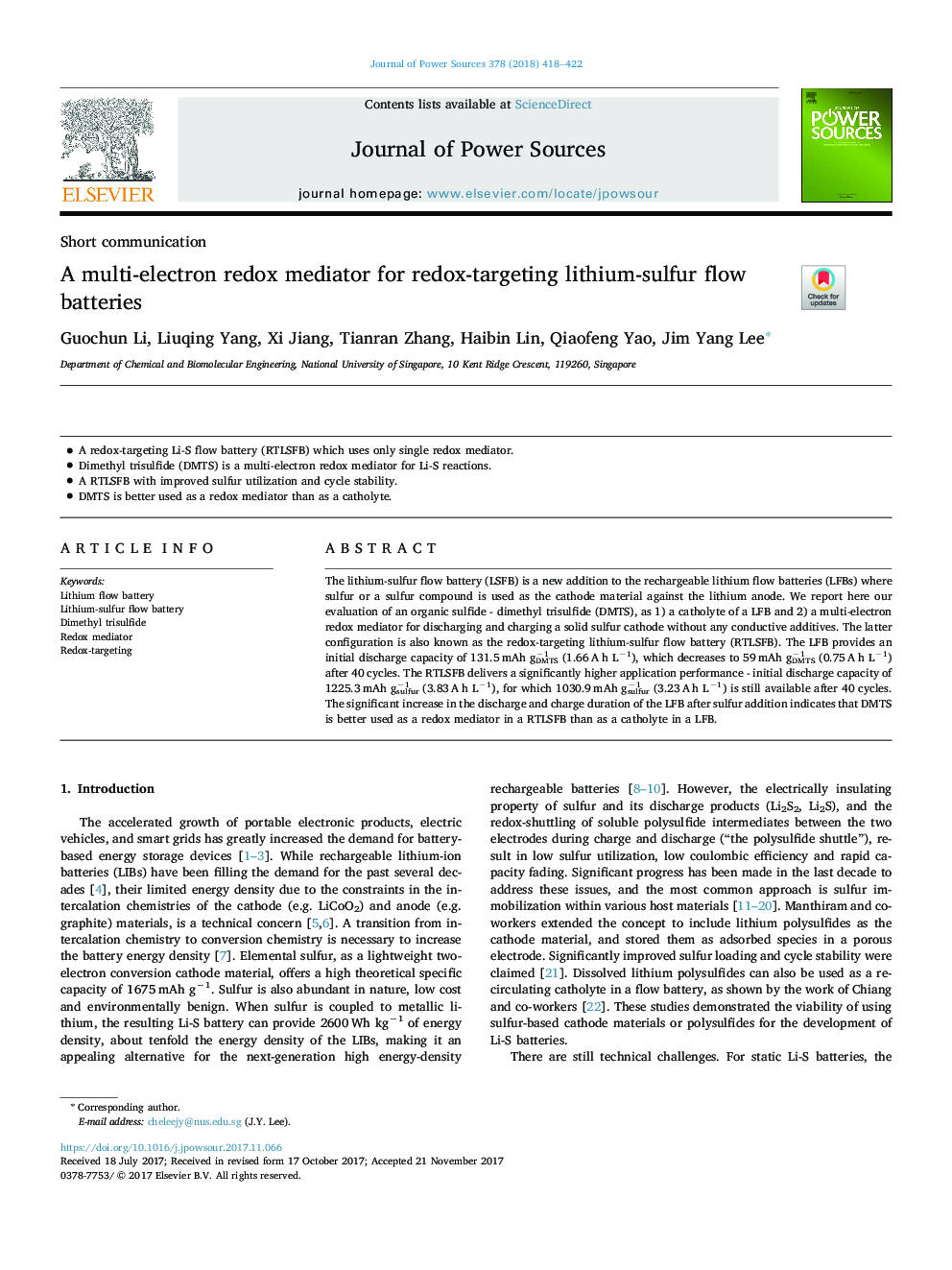| Article ID | Journal | Published Year | Pages | File Type |
|---|---|---|---|---|
| 7725947 | Journal of Power Sources | 2018 | 5 Pages |
Abstract
The lithium-sulfur flow battery (LSFB) is a new addition to the rechargeable lithium flow batteries (LFBs) where sulfur or a sulfur compound is used as the cathode material against the lithium anode. We report here our evaluation of an organic sulfide - dimethyl trisulfide (DMTS), as 1) a catholyte of a LFB and 2) a multi-electron redox mediator for discharging and charging a solid sulfur cathode without any conductive additives. The latter configuration is also known as the redox-targeting lithium-sulfur flow battery (RTLSFB). The LFB provides an initial discharge capacity of 131.5â¯mAh gâ1DMTS (1.66â¯Aâ¯h Lâ1), which decreases to 59â¯mAh gâ1DMTS (0.75â¯Aâ¯h Lâ1) after 40 cycles. The RTLSFB delivers a significantly higher application performance - initial discharge capacity of 1225.3â¯mAh gâ1sulfur (3.83â¯Aâ¯h Lâ1), for which 1030.9â¯mAh gâ1sulfur (3.23â¯Aâ¯h Lâ1) is still available after 40 cycles. The significant increase in the discharge and charge duration of the LFB after sulfur addition indicates that DMTS is better used as a redox mediator in a RTLSFB than as a catholyte in a LFB.
Keywords
Related Topics
Physical Sciences and Engineering
Chemistry
Electrochemistry
Authors
Guochun Li, Liuqing Yang, Xi Jiang, Tianran Zhang, Haibin Lin, Qiaofeng Yao, Jim Yang Lee,
